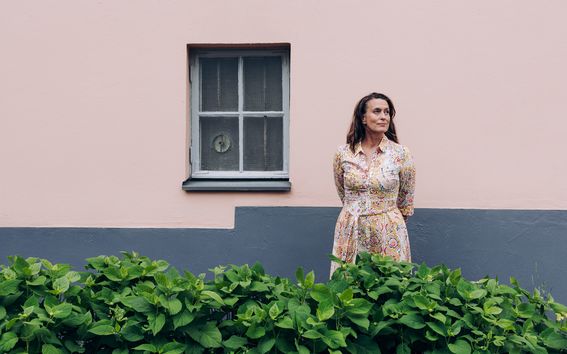Everyday choices: Kristjana Adalgeirsdóttir, what does an architect do in a war zone?

What is an architect’s role in supporting people forced to leave their homes, whether by natural disasters or conflict?
At the beginning of 2024 there were 114 million displaced people around the world – but it’s important not to get lost in the numbers or the scale of the crisis. Behind every one of those people there is a story and hope for a future, and the need for a place to stay.
As an architect, you’re part of a multisectoral team working to find solutions to a complex set of problems that are changing all the time. Sometimes thousands of people are coming into an area, and you have to find a way to solve settlement problems, or you’re supporting recovery or reconstruction. The work is often quite far from the traditional work of an architect, which is usually designing a product, a house. The mantra for humanitarian settings is that it’s not the product, it’s the process.
What special skills do architects need in the humanitarian context?
Architects are trained to see and understand complex situations, connecting various physical and socio-cultural elements into a concrete form. In emergency settings, you need a very rapid response for shelter needs but you also have to understand the unique cultural and physical context of each crisis. What is the climate? How do people prepare food? How do they sleep – on the floor or in hammocks? There are lots of projects around the world in emergency response and recovery that are abandoned by people because they don’t respond to their needs.
The displaced person must always be at the centre. Everything should be about supporting them in their process. Most of all, the work requires a humble approach, respect for the affected communities and skill in teamwork.
How can losing our home affect our sense of identity?
Our roots are important to us as human beings – our very identity is linked to the places or spaces that we live in. Not being able to have that feeling of actually belonging somewhere has a huge effect on your health and well-being, and this sense of needing to feel rooted doesn’t disappear when people are displaced. People still seek a way to make a home in whatever place they’re staying.
I remember one case in Thessalonica, where refugees were living in identical containers. Out the front of one were Christmas lights and fake Christmas trees. It made the statement: This is my place. This is where we are rooted…at least for a while.
How did you get into this line of research?
I always wanted to work with architecture and our built environment, but preferably for the global majority who live in challenging settings. I feel very happy that I can combine my academic journey with work in the humanitarian field. Both give invaluable insights that mutually enrich each other.
Two years ago, I was cleaning out my mother’s house after she died, and I discovered a letter from the Icelandic Red Cross in 1988. It said: “Dear Kristjana, thank you for your interest in the international work of the Red Cross. We suggest that you get yourself an education and some life experience and then come back to us.”
I would love to find the person who wrote it and update them!
This article has been published in the Aalto University Magazine issue 34 (issuu.com), September 2024.
Read more news

Research Council of Finland establishes a Center of Excellence in Quantum Materials
The Centre, called QMAT, creates new materials to power the quantum technology of coming decades.
Major funding powers development of next-generation machine technology aimed at productivity leap in export sectors
The BEST research project is developing new types of sealing, bearing, and damping technology.
The TAIMI project builds an equal working life – a six-year consortium project seeks solutions to recruitment and skill challenges
Artificial intelligence (AI) is changing skill requirements, the population is aging, and the labor shortage is deepening. Meanwhile, the potential of international experts often remains unused in Finland. These challenges in working life are addressed by the six-year TAIMI project funded by the Strategic Research Council, and implemented by a broad consortium.






